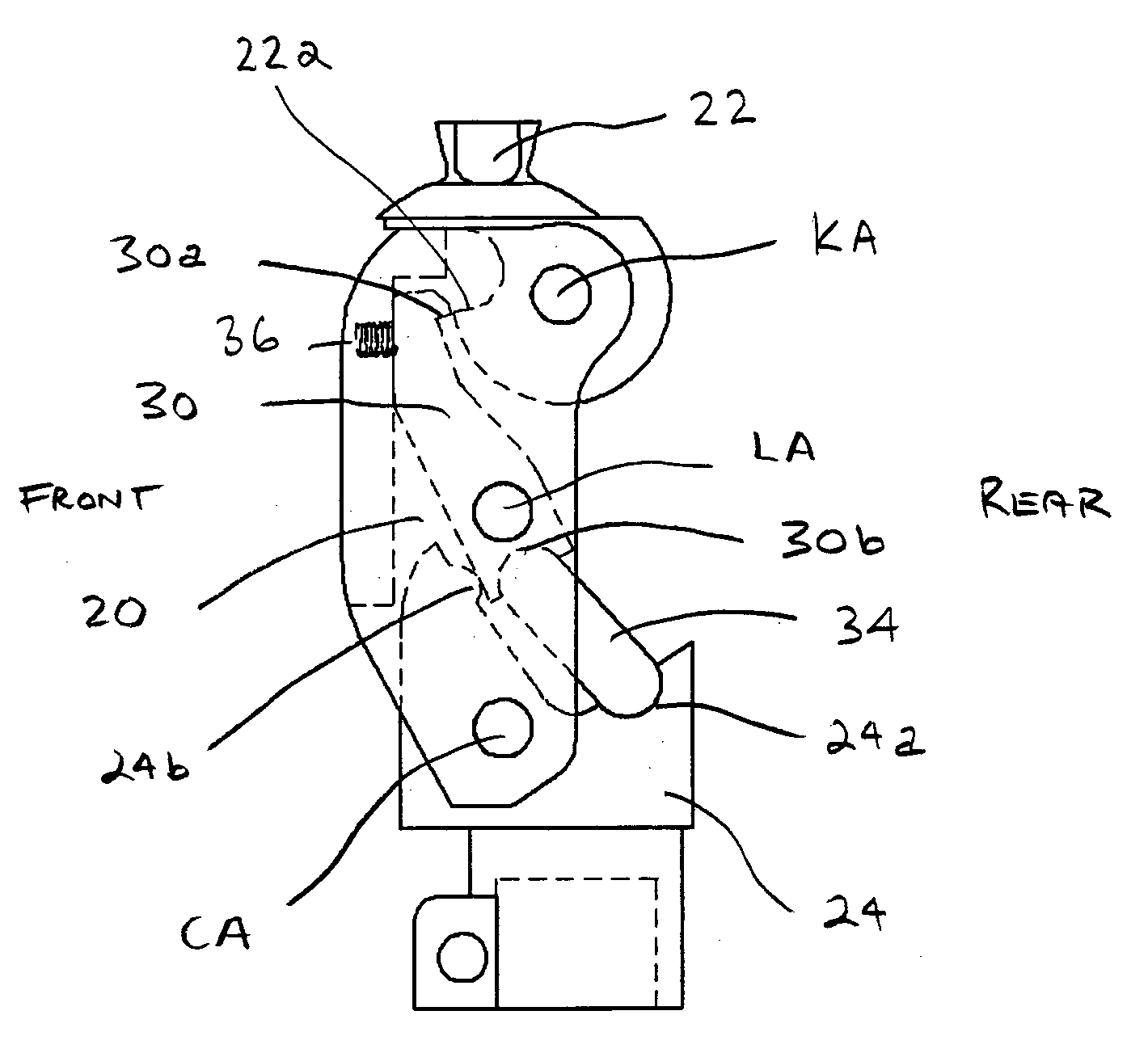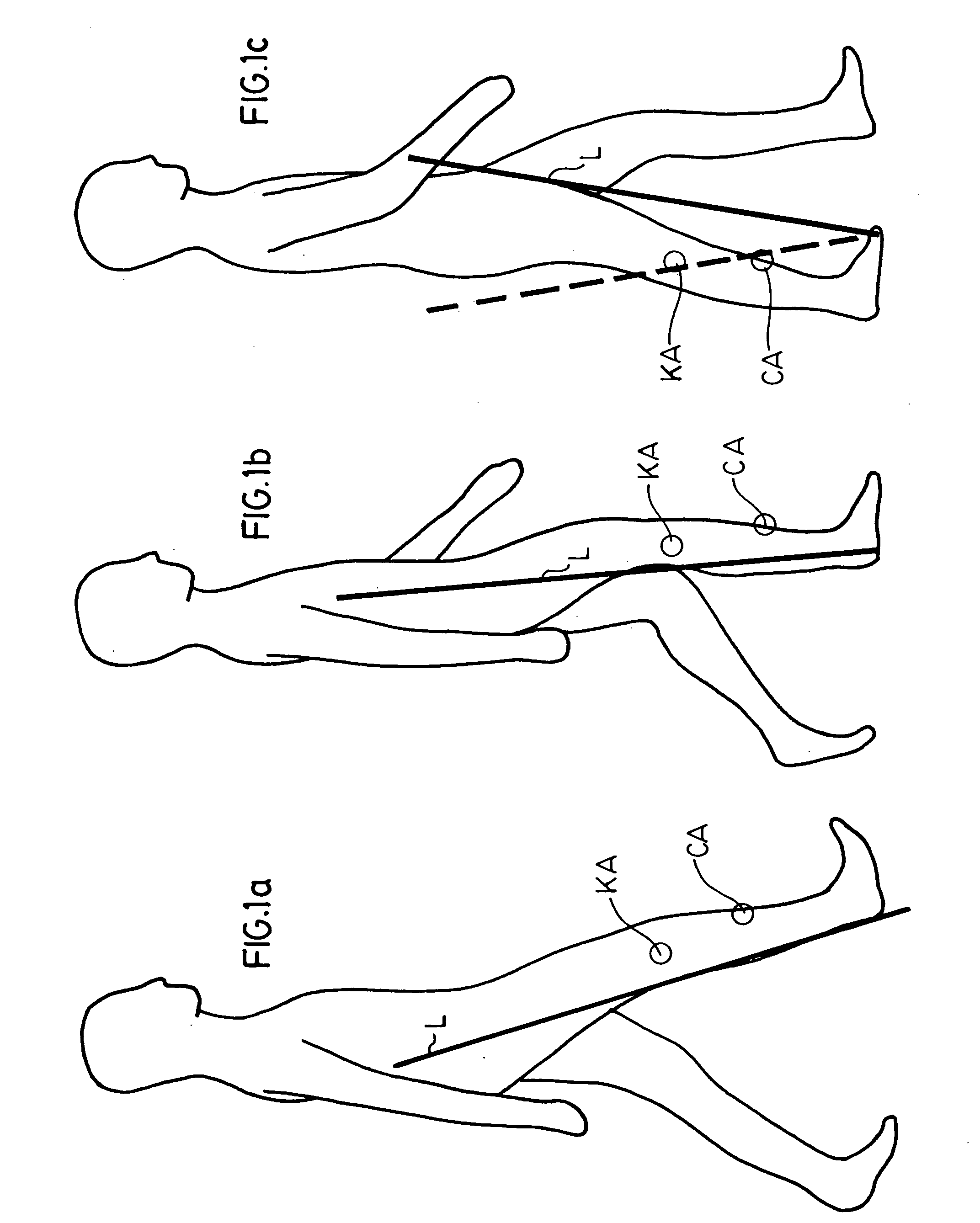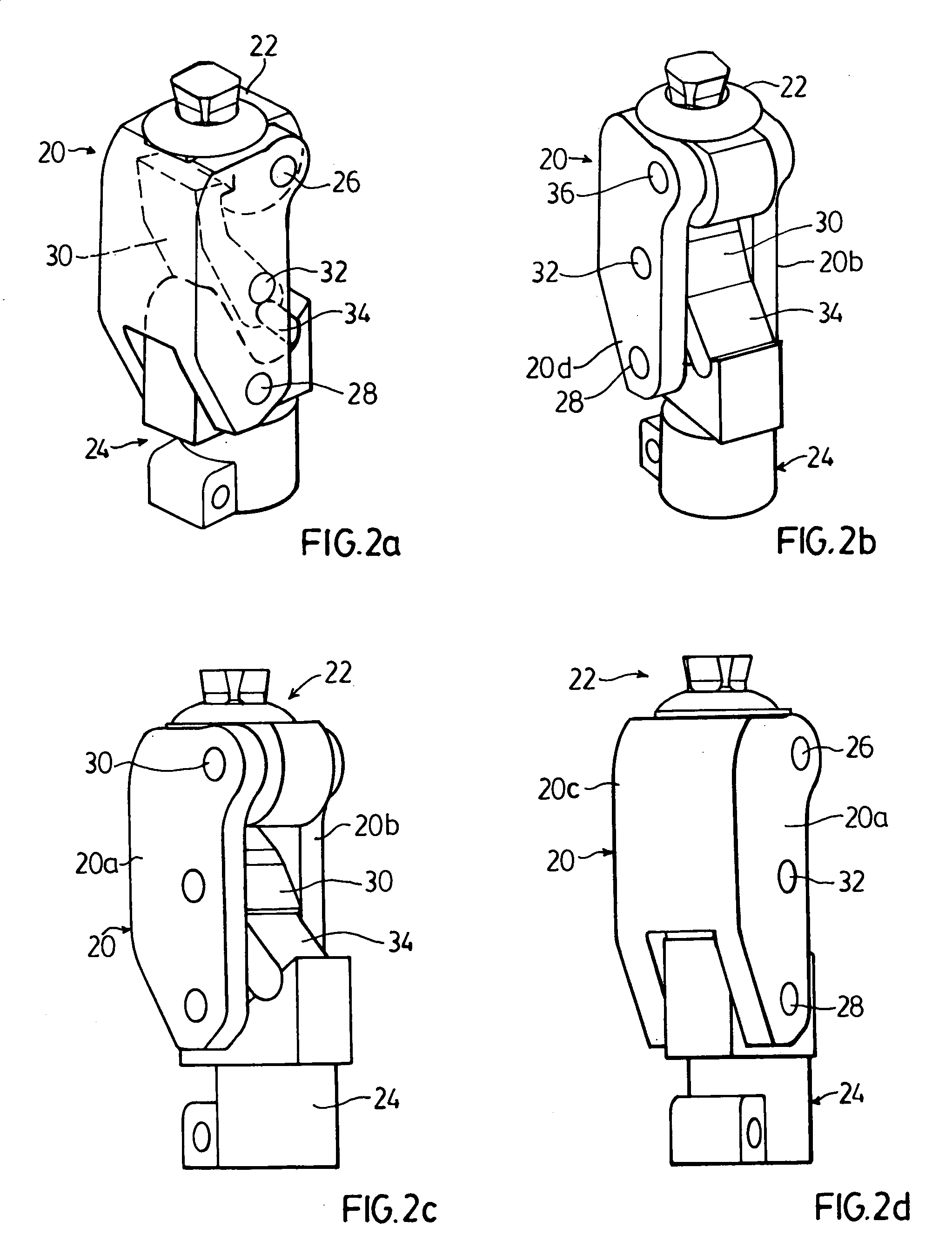Artificial knee joint
a knee joint and artificial technology, applied in the field of artificial knee joints, can solve the problems of amputee failure, uncontrollable bending of artificial knees, and inability to produce ideal gait characteristics, and achieve the effect of improving artificial knee joints
- Summary
- Abstract
- Description
- Claims
- Application Information
AI Technical Summary
Benefits of technology
Problems solved by technology
Method used
Image
Examples
Embodiment Construction
[0026] Reference will first be made to FIG. 1 is describing control of an artificial knee joint in accordance with the teachings of Radcliffe supra. As noted previously, the knee should be controlled so that during weight bearing, the knee lock is inactive when the fore foot is loaded, or similarly, the knee lock is activated only when the rear and / or mid-region of the foot is loaded. In the three diagrams that make up FIG. 1, a load line through the leg is denoted L. The pivot axis of the knee (knee axis) is denoted KA and a control axis is denoted CA. The knee axis KA and control axis CA are shown as white dots with CA below and in front of KA.
[0027] In diagram a) the knee would normally collapse since the load line L passes behind KA and causes a flexion moment at KA. However, the control is such that as long as there is a flexion moment at CA, a lock is activated at KA. The person rolls over the foot until the toe is loaded, (diagram c)), at which point the person will apply a ...
PUM
 Login to View More
Login to View More Abstract
Description
Claims
Application Information
 Login to View More
Login to View More - R&D
- Intellectual Property
- Life Sciences
- Materials
- Tech Scout
- Unparalleled Data Quality
- Higher Quality Content
- 60% Fewer Hallucinations
Browse by: Latest US Patents, China's latest patents, Technical Efficacy Thesaurus, Application Domain, Technology Topic, Popular Technical Reports.
© 2025 PatSnap. All rights reserved.Legal|Privacy policy|Modern Slavery Act Transparency Statement|Sitemap|About US| Contact US: help@patsnap.com



